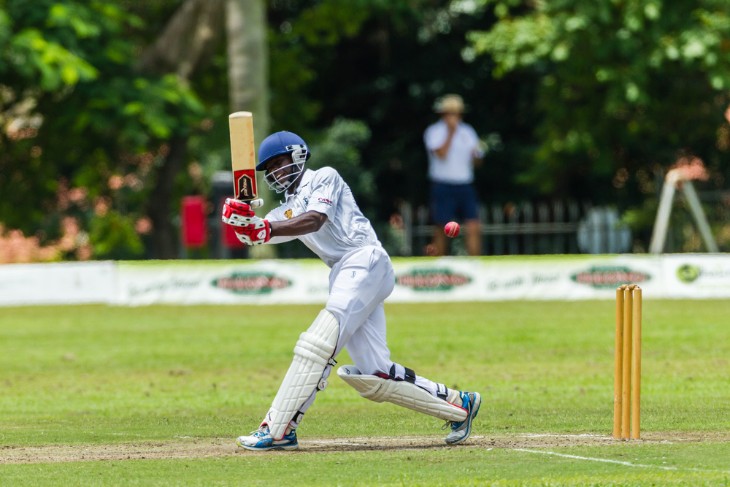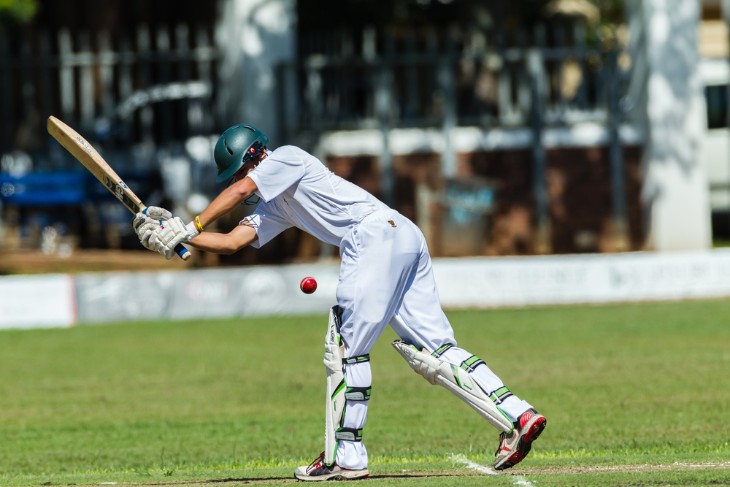- The Ashes Series: An Enduring Rivalry with Australia
- England's World Cup Journey: Highlights and Challenges
- Women's Cricket in the UK: A Story of Growth and Triumphs
- Iconic Matches: Unforgettable Games in UK Cricket History
- The Changing Face of Cricket: Evolution of Rules and Formats
- Notable UK Cricketers: Legends and Their Legacies
- Scandals and Controversies: Testing Times in UK Cricket
- Conclusion
The origins of cricket in the United Kingdom date back to the late 16th century. Emerging first in southeast England, cricket had become an established sport by the 17th century, with the earliest known reference in a court case at Guildford in 1597. During this period, cricket transformed from a children's game to a competitive adult sport. The expansion of the British Empire played a crucial role in the spread of cricket globally.
The game's early form saw underarm bowling as the norm. The development of cricket from its rudimentary beginnings to a structured sport was gradual. By the 18th century, it became more sophisticated with the creation of the first known cricket club, Hambledon Club in Hampshire, which played a significant role in the evolution of the game. The Marylebone Cricket Club (MCC), established in 1787, later took the mantle, codifying the Laws of Cricket in 1788, which laid the foundation for the modern game.
The Ashes Series: An Enduring Rivalry with Australia
The Ashes series, a Test cricket series between England and Australia, is one of the most celebrated rivalries in international cricket. The term 'The Ashes' originated from a satirical obituary published in a British newspaper, The Sporting Times, in 1882 after England's first home defeat against Australia at The Oval. The obituary stated that English cricket had died, and "the body will be cremated and the ashes taken to Australia." The next series, played in Australia, was dubbed as the quest to regain The Ashes.
England's World Cup Journey: Highlights and Challenges
England's journey in the Cricket World Cup has been a tale of fluctuating fortunes since the inaugural tournament in 1975. Hosting the first three World Cups, England reached the final in 1979, 1987, and 1992, only to finish as runners-up each time. These early years were marked by strong performances, yet consistently falling just short of victory. It was a period characterised by skilled cricketers like Ian Botham and Mike Gatting, who became synonymous with England's World Cup campaigns.
However, the turn of the millennium saw a decline in England's World Cup performances. The team struggled to adapt to the evolving dynamics of one-day cricket, often criticised for a conservative approach in a period dominated by more aggressive teams. This trend continued until a significant shift in strategy and team composition emerged around 2015, leading to a more aggressive and dynamic style of play. This transformation was epitomised by their 2019 World Cup campaign, where England, led by Eoin Morgan, finally clinched their maiden title in a dramatic and unforgettable final against New Zealand.

Women's Cricket in the UK: A Story of Growth and Triumphs
Women's cricket in the United Kingdom has a rich but often overlooked history. The first recorded match dates back to 1745 in Surrey. However, women's cricket took a substantial period to gain widespread recognition. The Women's Cricket Association was formed in 1926, marking a significant step in organising and promoting women's cricket in the UK. Despite these early developments, it wasn't until the late 20th century that women's cricket began to receive the recognition it deserved.
The turn of the 21st century marked a new era for women's cricket in the UK. With increased support from the England and Wales Cricket Board (ECB), the game witnessed professionalisation and greater public interest. Key milestones include England winning the Women's Cricket World Cup in 1993 and 2009, and the introduction of the Women's Super League in 2016. These developments signified not just the growth of the sport but also the breaking of gender barriers in cricket, paving the way for future generations of female cricketers in the UK.
Iconic Matches: Unforgettable Games in UK Cricket History
The history of UK cricket is replete with matches that have left an indelible mark on the sport. One of the most iconic is the 1981 Ashes Test at Headingley, often referred to as "Botham's Ashes." England, following on, was facing certain defeat against Australia. Ian Botham's remarkable innings of 149 not out turned the game on its head, leading England to an improbable victory. This match is celebrated not just for its dramatic turnaround but also for encapsulating the never-say-die spirit of cricket.
Another unforgettable match in UK cricket history is the 2005 Ashes series' second Test at Edgbaston. Regarded as one of the greatest cricket matches ever played, it saw England narrowly defeating Australia by just two runs. The intense competition and dramatic fluctuations in the game captivated audiences worldwide, revitalising interest in Test cricket. Such matches highlight the unpredictability and excitement of cricket, encapsulating the essence of why the sport is so passionately followed in the UK.
Lords Cricket Ground, situated in London, is often referred to as the "Home of Cricket." Established by Thomas Lord in 1814, it has been the site of some of the most significant events in cricket history. Lords is the home ground of the Marylebone Cricket Club (MCC), the guardian of the Laws of Cricket, and Middlesex County Cricket Club. The ground is renowned for its rich history, iconic pavilion, and the famous Long Room, which players walk through to reach the field.
Lords has hosted numerous historic matches, including multiple World Cup finals. The ground is not just a venue for international cricket; it is a repository of the sport's history. The MCC Museum, located within the ground, houses a wealth of cricket memorabilia, including the original Ashes urn. Lords continues to evolve, blending its historic charm with modern development, symbolising the enduring legacy and continuous evolution of cricket in the UK.
The Changing Face of Cricket: Evolution of Rules and Formats
Cricket in the UK has undergone significant evolution in terms of rules and formats. The 20th century witnessed several changes aimed at making the game more dynamic and appealing. One of the key developments was the introduction of limited-overs cricket. The first One-Day International (ODI) was played in 1971, a format that offered a faster-paced, more accessible version of the game. This shift was crucial in increasing cricket's appeal to a broader audience.
The 21st century saw the advent of Twenty20 (T20) cricket, further accelerating the game's pace. The England and Wales Cricket Board (ECB) played a pioneering role in launching the first professional T20 competition in 2003. T20 cricket, with its shorter format and emphasis on entertainment, attracted new audiences and transformed the commercial landscape of the sport. These changes reflect cricket's ability to innovate and adapt, ensuring its relevance and popularity in changing times.

Notable UK Cricketers: Legends and Their Legacies
The United Kingdom has produced many legendary cricketers who have left an indelible mark on the sport. Sir Jack Hobbs, active in the early 20th century, was renowned for his batting prowess and amassed over 61,000 runs and 199 centuries in first-class cricket, a record that still stands. Another notable figure is Sir Ian Botham, one of the greatest all-rounders in cricket history, known for his match-winning performances in both batting and bowling, particularly in the 1981 Ashes series.
In recent times, Sir Alastair Cook's contributions have been significant. Cook, England's leading run-scorer in Test cricket, has been acclaimed for his consistency and resilience. Additionally, Andrew Flintoff's all-around abilities and charisma have had a lasting impact on the sport. These cricketers have not only achieved personal milestones but have also significantly contributed to England's successes and the global appeal of cricket.
Scandals and Controversies: Testing Times in UK Cricket
UK cricket, like many sports, has not been immune to scandals and controversies. One of the most significant was the match-fixing scandal in the late 1990s, which involved players from various countries, including England. These incidents raised serious concerns about the integrity of the sport and led to the establishment of anti-corruption units to safeguard the game.
Another controversy that shook English cricket was the spot-fixing scandal during Pakistan's tour of England in 2010. This incident led to lengthy bans for three Pakistani players and brought to the fore the challenges posed by illegal betting syndicates. These events have necessitated stricter governance and transparency in cricket administration, emphasising the need for continual vigilance to uphold the sport's integrity.
Conclusion
In conclusion, the rich tapestry of UK cricket, woven with historic rivalries, legendary players, and memorable matches, reflects the sport's enduring spirit. Despite challenges such as wartime disruptions, controversies, and the evolving landscape of global sports, cricket in the UK has maintained its prominence and appeal. The sport's ability to innovate, whether through rule changes or embracing new formats, has been pivotal in its enduring relevance.
Cricket in the UK, thus, stands as a testament to tradition and adaptability, bridging past and present, and promising an exciting future. It continues to captivate the imagination of millions, playing an integral role in the cultural fabric of the United Kingdom.
For more information:


